Discovering Emerging Hotspots in Dubai
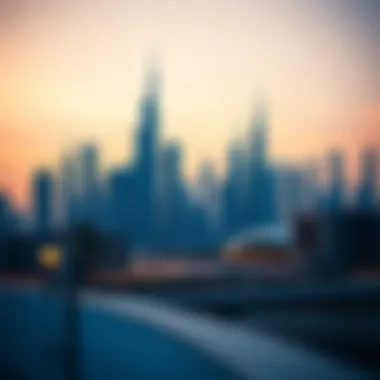
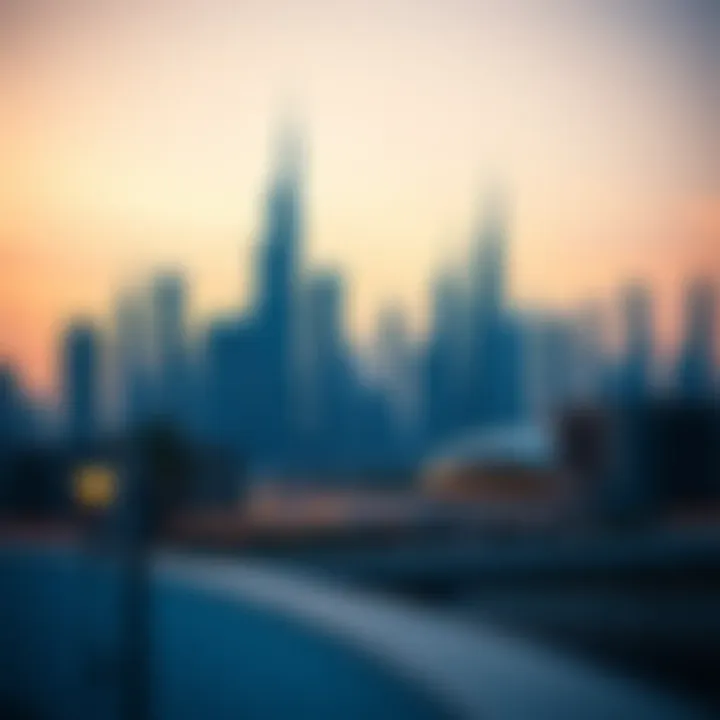
Intro
Dubai, a city synonymous with modernity and luxury, has become a focal point for those looking to explore new horizons in real estate and lifestyle. As the market continuously evolves, fresh destinations emerge, each boasting distinct qualities that appeal to a variety of audiences. This guide will shine a light on these promising locales, offering insight into their significance within Dubai's bustling real estate scene and dynamic tourism industry.
Navigating through the intricacies of these new areas, potential homebuyers, investors, and expatriates can uncover countless opportunities for cultural exploration and investment. From cutting-edge architectural feats that define the skyline to serene sanctuaries nestled away from the urban hustle, the unfamiliar corners of Dubai invite you to delve deeper into their offerings.
By examining the underlying market trends and economic influences at play, this article aims to provide a thorough understanding of where the next hotspot might lie.
"In the heart of the desert, opportunities bloom like never before—Dubai is where dreams find a home."
As we embark on this journey through the uncharted territories of Dubai, you will gain practical advice for navigating investment waters, alongside strategies to mitigate risks and maximize returns. Let’s uncover these new destinations together.
Prologue to Dubai's Evolving Landscape
As the sands of time shift in the bustling emirate of Dubai, its real estate landscape undergoes a meticulous transformation. This evolving scenery doesn’t merely reflect changing buildings but embodies a cultural and economic metamorphosis that caters to a diverse range of interests—from investors and expatriates to tourists and local residents. Understanding this dynamic is crucial as it sheds light on the opportunities emerging neighborhoods present, offering a blend of modernity and tradition.
The Shift in Dubai's Real Estate Dynamics
Dubai's real estate market is like a living organism, constantly adapting to the pulse of global economic trends and local demands. In recent years, several factors have contributed to a notable shift, shaping the way properties are bought, sold, and perceived.
The traditional appeal of luxury villas and iconic skyscrapers is now being challenged by the growing allure of mixed-use developments. This trend recognizes the importance of establishing vibrant communities where living, working, and leisure seamlessly intertwine. Areas such as Dubai Creek Harbour and Dubai Hills Estate showcase this shift, promising not just residences but lifestyles complete with parks, schools, and retail spaces all within arm's reach. This change isn’t just aesthetics; it’s about creating an ecosystem that fosters connection.
Several stakeholders are driving this change, including government initiatives aimed at attracting foreign investments and incentivizing buyers with more flexible property regulations. The recent introduction of longer-term visas for expatriates also signifies a commitment to making Dubai a global hub. These policies have positioned Dubai’s real estate not just as a viable investment but as a long-term home for many.
Moreover, there's an increasing emphasis on sustainability. Developers are now integrating eco-friendly practices into their projects, recognizing that conscious living can enhance property value. Technologies like solar panels and green building certifications are becoming standard rather than exceptions.
New Trends in Urban Development
The horizon of Dubai is dotted with innovative construction, but urban development goes beyond mere building—it's a reimagining of how people interact with their environment. One significant trend is the rise of smart cities that leverage technology to enhance quality of life. The Smart Dubai initiative is an ambitious approach to revolutionizing urban living by incorporating digital solutions across services, accessibility, and infrastructure.
These forward-thinking projects focus on creating intuitive environments where information flows freely. For instance, smart traffic management systems can alleviate congestion, while mobile applications provide residents real-time updates on public transport, enhancing overall connectivity. It mirrors a global shift towards integrating advanced technologies into everyday life, ensuring residents aren't merely occupants but active participants in their communities.
Additionally, urban development in Dubai is responding to a demand for wellness-oriented living. Projects like the Green Planet Dubai delve into concepts of biophilia, emphasizing natural integration and wellness. Adding parks, gardens, and walking trails into the urban fabric isn’t just aesthetically pleasing; it plays a vital role in promoting mental and physical well-being, which in turn attracts families and health-conscious individuals seeking refuge from the frantic pace of the metropolis.
Drawing on these evolving dynamics, the blend of innovative design, sustainability, and community interactivity positions Dubai not merely as a destination but as a lifestyle choice. The examined landscape doesn't only speak to investors about potential returns but echoes the sentiments of individuals seeking homes. This is the crux of what makes Dubai's evolving landscape not just significant, but essential to grasp for anyone entangled in the complexities of its real estate market.
Prominent New Locations in Dubai
Dubai is not just a city of the past or a temple of luxury; it’s a place that's constantly evolving. With emerging neighborhoods, this bustling metropolis continues to open doors to opportunities both for investors and expatriates. These new locations represent a shift in lifestyle, housing options, and attractions that cater to the diverse tastes of its residents and visitors alike. Understanding these areas is crucial for anyone keen on navigating Dubai’s real estate market and its vibrant cultural landscape.
Overview of Emerging Neighborhoods
Dubai's emerging neighborhoods are more than just developments; they are reflections of the city’s ambition and vision. Each area tells a unique story, from luxury waterfronts to serene suburbs that promise a quality life away from the hustle and bustle.
- Dubai Creek Harbour offers a blend of nature and modernity. This area is being developed around the historic creek, with residential options that promise waterfront living while being close to the city’s heartbeat. It has a magnificent view of the skyline, particularly with the Burj Khalifa standing tall nearby.
- Madinat Jumeirah Living combines traditional Arabic architecture with contemporary living. This community is designed to cater to families, featuring spacious apartments and community parks that connect residents to nature. It’s like a cultural homage through its architecture while catering to the needs of modern life.
- Dubai Hills Estate is a golfer’s paradise, offering sprawling greenery amidst luxurious villas and townhouses. The community is carefully planned to include schools, hospitals, and retail, making it an all-in-one hub.
Understanding these neighborhoods lays the groundwork for potential homebuyers and investors looking for a slice of the Dubai skyline.
Attractions Driving Interest
Developing neighborhoods never thrive on housing alone. They need a palette of attractions to spark interest, cultivate community, and ultimately sustain value. In Dubai, the appeal is multifaceted.
- Dubai Creek Tower is set to become a landmark that will redefine the skyline. This upcoming structure is planned to be taller than the Burj Khalifa, aiming to attract tourists and residents globally.
- Dubai’s cultural district in Al Quoz is increasingly becoming a hotspot for art enthusiasts. Galleries, performance spaces, and artistic installations are transforming this area into a vibrant hub. The local art scene is flourishing, thanks to annual events like Art Dubai, which draw attention from the global art community.
- Community parks and recreational areas such as those in the Dubai Hills Estate provide a haven for families. These spaces not just enhance the lifestyle but also improve property values, making them attractive to investors.
- Dubai's rich culinary diversity keeps its residents busy with a variety of dining options. From food trucks offering international cuisine to Michelin-starred restaurants, the gastronomical landscape is robust.
"Investment in Dubai's emerging locations is not just about securing property; it's about becoming part of a vibrant community fueled by culture, art, and lifestyle."
These attractions are not mere embellishments; they serve a fundamental role in shaping the desirability of new neighborhoods. They draw residents, foster a sense of belonging, and become integral to the city’s economic growth.
Cultural and Recreational Opportunities
Dubai is transforming itself into more than just a bustling business hub or a concrete wonder. As new neighborhoods sprout like wildflowers in the desert, the cultural and recreational opportunities these areas offer play a pivotal role in shaping the city's identity. These elements not only enhance the lifestyle of residents and visitors but also serve as vital selling points for potential investors, homebuyers, and expatriates seeking a place rich in experience and connectivity.
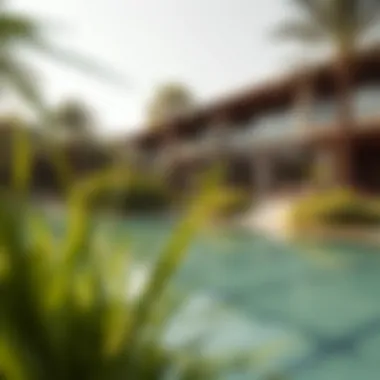
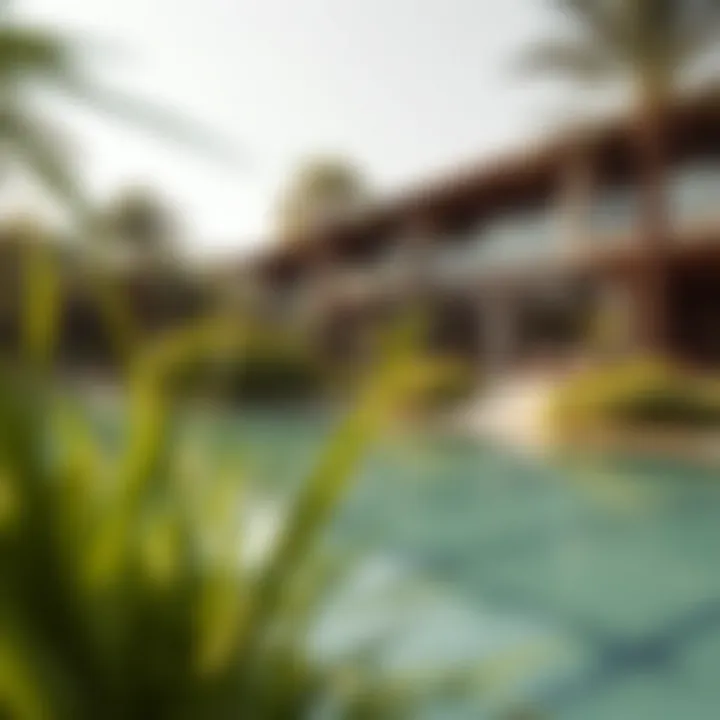
Art and Design Districts
The rise of art and design districts in Dubai stands testament to the city’s thirst for creativity and cultural expression. Neighborhoods like Alserkal Avenue and the Dubai Design District (d3) have become melting pots of artistic flourishing, hosting galleries, studios, and pop-up art events. Investors keen on tapping into these vibrant spaces find immense potential as art initiatives bring in foot traffic, attracting not just local residents but also international patrons.
These districts are characterized by their open spaces adorned with sculptures and street art, offering an inviting backdrop for cultural events. The emphasis here is on community engagement; places like the The Third Line gallery regularly hold exhibitions featuring both established and emerging artists, while design-centric workshops garner interest in design thinking and creativity.
"Art districts breathe life into urban settings, telling stories of cultures and inspiring those who walk their streets."
A few notable elements of Dubai’s art and design districts include:
- Variety of Artistic Styles: From contemporary to traditional, there’s a blend of everything inspiring creativity.
- Events and Festivals: Regular art events, exhibitions, and fairs keep the scene dynamic and fresh.
- Supporting Local Talent: Many spaces are focused on showcasing and supporting local artists and designers, creating a sense of community.
Parks and Green Spaces
In stark contrast to the towering skyscrapers and bustling marketplaces, Dubai has recognized the need to tuck in some greenery within its sprawling urban expanse. Recent developments have prioritized parks and green spaces, translating to an enriched quality of life for its inhabitants. Areas such as the Dubai Marina Walk and Al Qudra Lakes underscore this shift towards ample green zones—ideal for community recreation and relaxation.
With features like jogging trails, picnic areas, and family-friendly facilities popping up, these parks offer urban dwellers an escape from the concrete jungle. Investing in real estate near these green spaces can provide long-term advantages, as properties in surroundings that promote outdoor activities often attract families and expatriates.
Consider the following benefits:
- Promotes Outdoor Activities: Parks encourage a healthy lifestyle, leading to increased foot traffic in the surrounding neighborhoods.
- Enhances Property Values: Proximity to green spaces can significantly boost property prices, making them attractive investment locations.
- Community Engagement: Parks serve as gathering spots for community events, fostering a sense of belonging among residents.
The orchestration of cultural and recreational opportunities in Dubai complements its modernity, nurturing a diverse lifestyle that appeals to a wide array of visitors and potential investors. As the landscape continues to evolve, these opportunities will remain integral to the future of the city.
Investment Potential in New Areas
Investing in new areas of Dubai presents a slew of opportunities, all linked to the dynamic growth the city is experiencing. With the potential for high returns and an expanding infrastructure, these locales are increasingly catching the eye of savvy investors. Understanding the investment potential is critical because it allows investors to make informed decisions that align with their long-term financial goals. Here, we will delve into a market analysis of these new neighborhoods and explore how they provide solid returns on investment.
Market Analysis of New Neighborhoods
The realm of Dubai’s real estate is shifting, and new neighborhoods are popping up like wildflowers after the rain. Areas such as Dubai Creek Harbour and Dubai South not only promise modern amenities but also offer unique selling points that hold significant appeal for investors. A mix of residential and business spaces is taking shape, hitting a sweet spot for families and professionals alike.
- Growth Rate: Recent reports indicate that neighborhoods like Jumeirah Village Circle (JVC) have seen significant capital appreciation, making them a hot property for investors looking to dip their toes into the burgeoning market.
- Infrastructure Investment: Massive infrastructural projects loom on the horizon, including metro rail extensions and roads, which significantly enhance accessibility and convenience for future residents. This plays a critical role in increasing property values.
- Demand Surge: With the influx of expatriates and a growing local population, the demand for housing is set to rise. New developments cater to various demographics, from luxury flats to affordable units, ensuring broad market appeal.
"Dubai's forward-thinking approach to urban development makes investing in new neighborhoods not just a possibility, but an exciting opportunity."
ROI for Potential Investors
When discussing the return on investment in newer locations, it becomes evident that these locales often yield better yields than their older counterparts. Investors are seeing noteworthy gains in rental income due to the tenant demand in these vibrant communities.
- Higher Rental Yields: Many new areas exhibit rental yields averaging between 6% and 8%, a figure that outpaces traditional hotspots around Dubai. This can provide a sustainable passive income for property owners.
- Potential for Capital Appreciation: As these areas grow and develop, property values are likely to rise, leading to capital gains. A solid example includes the properties in Arabian Ranches, where early investors doubled their investments over a relatively short time.
- Government Initiatives: Various government policies supporting foreign ownership dramatically enhance the investment landscape. Regulations aimed at boosting tourism and lifestyle activities further increase the attractiveness of these areas.
In summary, there is a breadth of potential waiting to be uncovered in Dubai's new neighborhoods. This blend of market analysis and a keen understanding of ROI makes for a compelling case for potential investors looking to explore what Dubai has to offer.
Comparative Analysis of Established vs. New Areas
When diving into the various segments of Dubai's evolving landscape, the comparative analysis between established and new areas provides crucial insights. Established neighborhoods boast a rich history and a certain charm that newcomers often seek. In contrast, the new areas are often defined by modernity and innovative infrastructure, catering to changing demands. Understanding the interplay between these two categories can help investors, buyers, and expatriates make informed decisions while navigating this dynamic real estate market.
Benefits of New Developments
As urban growth propels Dubai into a new era, new developments are sprouting up at an astonishing rate. One of the primary reasons individuals and families are drawn to these areas is their appeal, which often revolves around a fresh design.
- Modern Amenities: New neighborhoods typically come equipped with the latest amenities, standing as examples of cutting-edge architecture and urban planning. This can include integrated smart home technologies or community-focused features like parks and recreational centers.
- Investment Growth: New offerings may represent opportunities to invest in areas that show high potential for appreciation. Investors familiar with market dynamics can tap into emerging trends, possibly securing favorable returns in the future.
- Community Feel: New areas often prioritize the establishment of communities, complete with ventures that foster interactions among residents, such as markets, coffee shops, and local events. People looking for a sense of belonging often find this appealing.
These benefits contribute to a vibrant lifestyle and investment prospects. The blend of modernity with community-centric planning represents a forward-thinking approach to living in Dubai.
Challenges Faced by New Neighborhoods
Even with the promising prospects these neighborhoods present, they are not without their challenges.
- Saturation Risks: As more developers enter the market, there’s a risk of over-saturation. This can have a dampening effect on property values, as choice increases for buyers, driving prices down.
- Infrastructure Development: New areas may face lagging infrastructure, with public transport and access routes not fully developed at first. Residents might find themselves living in an area that’s still building its essential services and accessibility, limiting immediate convenience.
- Uncertainty in Community Culture: Unlike established areas with deeply rooted cultures, new neighborhoods can often feel transient. The mix of expatriates and locals leads to a constantly changing demographic, sometimes resulting in a more fragmented sense of community.
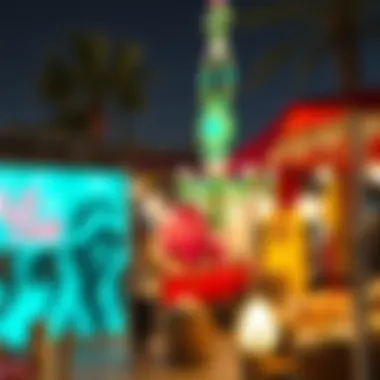
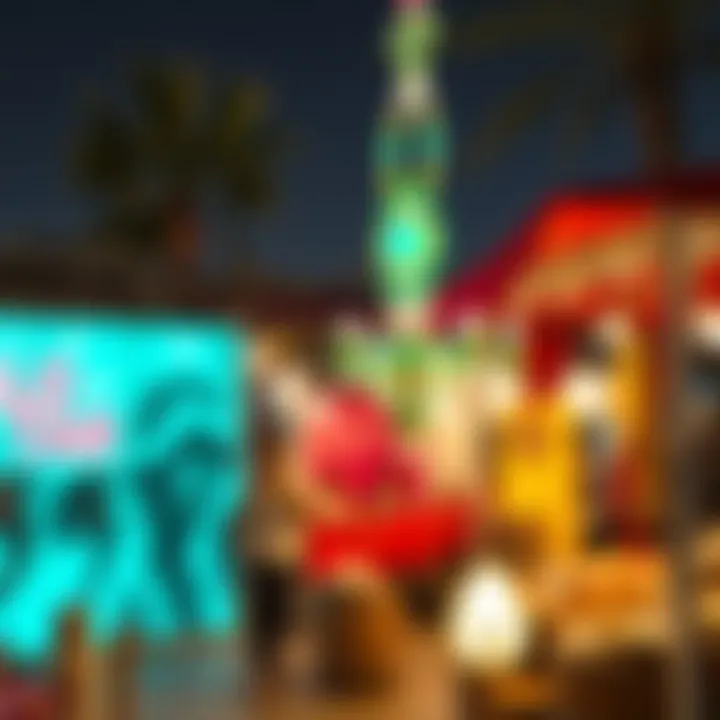
Despite these hurdles, new developments can pivot into thriving locales with time, if well-planned and supported with adequate infrastructure.
Unique Architectural Features
When exploring the modern landscape of Dubai, one cannot overlook the unique architectural features that define its identity. These structures are more than just buildings; they are emblematic of the city's ambition to blend tradition with innovation, creating a skyline that tells a story of cultural evolution and economic progress. The architectural marvels in Dubai not only attract tourists but also serve as symbols of prosperity and modernity that resonate with investors seeking to capitalize on the thriving real estate market.
Among these distinctive elements, a few stand out:
- Dynamic Designs: Architects in Dubai are pushing boundaries with creative designs that reflect the region's heritage while embracing contemporary aesthetics. The Burj Khalifa, for instance, stands as an example of Futuristic Design combined with elements inspired by Islamic architecture. It pulls curious minds from around the globe, contributing to a vibrant tourism economy.
- Cultural Integration: Many new developments are designed with an eye toward retaining local cultural elements. For example, the Museum of the Future combines cutting-edge technology and sustainable practices, all while echoing traditional motifs in its exterior. This approach creates a sense of belonging and familiarity for residents and visitors alike.
- Sky Gardens and Green Spaces: Buildings incorporating vertical gardens and bio-filters showcase how architecture can harmonize with nature. These features not only beautify the skyline but contribute to the well-being of the city. Notably, the Dubai Creek Tower is designed to include lush vertical gardens that blend natural elements into urban living.
Innovative Design Solutions
Dubai's architectural scene is rife with innovative solutions to common urban challenges. As the city grapples with growing demands for housing and infrastructure, architects and urban planners are turning to inventive designs that maximize space and efficiency.
A focus on mixed-use developments is one such solution. Projects that combine residential, commercial, and recreational spaces into a single structure help streamline urban planning by minimizing the need for extensive commuting. The Dubai Hills Estate exemplifies this trend with its eco-friendly designs, offering residents a self-contained community.
Moreover, the use of cutting-edge technology is prevalent in modern architecture. Smart buildings equipped with automated systems manage energy consumption and enhance the overall experience for occupants. The One Za'abeel Tower, which boasts the world's highest occupied floor, utilizes innovative engineering to achieve its ambitious heights while optimizing functionality.
Sustainability in New Developments
In the face of global climate change, sustainability is not merely a buzzword; it’s a pressing necessity. Dubai's commitment to sustainable architecture is reflected in its recent developments that prioritize environmentally friendly practices.
Green building certifications like LEED (Leadership in Energy and Environmental Design) are becoming the norm rather than the exception here. Developers are increasingly adopting materials that reduce carbon footprints, and design strategies that enhance energy efficiency. The Dubai Sustainable City exemplifies this movement, featuring solar panels, water-efficient landscaping, and a strong emphasis on biodiversity.
Furthermore, the integration of renewable energy sources has become commonplace. Many new buildings harness solar power, reducing reliance on traditional energy grids. This not only contributes to lower operational costs but also positions Dubai as a leader in sustainable urban living.
"The architecture of Dubai is a dialogue between nature and technology, creating spaces that are as beautiful as they are functional."
Looking ahead, the architectural features emerging in Dubai will likely set a precedent for other cities in the Middle East and beyond, showcasing the importance of balancing progress with environmental stewardship.
Transportation and Accessibility
Transportation is the lifeblood of any thriving city, and in Dubai, it's no different. The easy movement of people and goods within the city significantly influences its economic landscape. When exploring new destinations, accessibility becomes a prime consideration for investors, residents, and visitors alike. This section provides insights into how the transportation framework in Dubai enhances its appeal as a global hub for business and leisure, emphasizing the benefits derived from an efficient transport network.
Public Transport Connections
Dubai's public transport system has evolved dramatically over the years, encompassing multiple modes including the iconic Dubai Metro, buses, and water taxis. The Dubai Metro, often regarded as one of the most advanced rail systems in the world, connects key neighborhoods with remarkable efficiency. Its two main lines stretch across a vast network, offering fast and reliable service to various parts of the city. The convenience of the metro allows individuals to avoid the notorious traffic jams that can often plague the roads, making daily commutes not just feasible but enjoyable.
The Dubai RTA (Roads and Transport Authority) has continually expanded public transport options. Buses are well-integrated into the Metro system, featuring dedicated lanes to ensure speedy transport across the city. Moreover, the water bus and abras (traditional wooden boats) are a charming way to traverse the waterways, combining convenience with a picturesque view.
Benefits of Public Transport Connections
- Affordability: Cost-effective travel options are available.
- Sustainability: Reduces carbon footprint by promoting the use of shared transport.
- Cultural Experience: Riding the metro not only saves time but also provides a unique look into the city life.
“An efficient transport system acts as a catalyst for urban growth and sustainability.”
In Dubai, public transportation is not merely a means to an end; it’s an experience that showcases the city's commitment to modern infrastructure and environmental sustainability.
Proximity to Major Business Hubs
A pivotal aspect of Dubai's attractiveness lies in its proximity to major business districts. Areas like Dubai International Financial Centre (DIFC) and Business Bay are the economic engines of Dubai, brimming with opportunities for commerce and trade. The integration of new neighborhoods with these prime business hubs enhances their desirability and can be a game-changer for investors.
Living close to areas of commerce greatly benefits expatriates and professionals who travel regularly for work. With seamless transportation access, commuting times are minimized, leading to a better work-life balance. Moreover, businesses flourish in accessible locations because they attract more foot traffic, client meetings, and collaborations.
Considerations for Proximity
- Ease of Access: Shorter travel times boost productivity.
- Networking Opportunities: An ideal setting for forming professional relationships.
- Lifestyle and Amenities: Proximity often leads to greater availability of restaurants, shops, and recreational facilities.
In summary, understanding transportation and accessibility in Dubai not only sheds light on the logistical aspects but also underlines how these elements contribute to shaping the urban lifestyle, making it easier for residents and investors to thrive in this dynamic city.
Community Features and Lifestyle

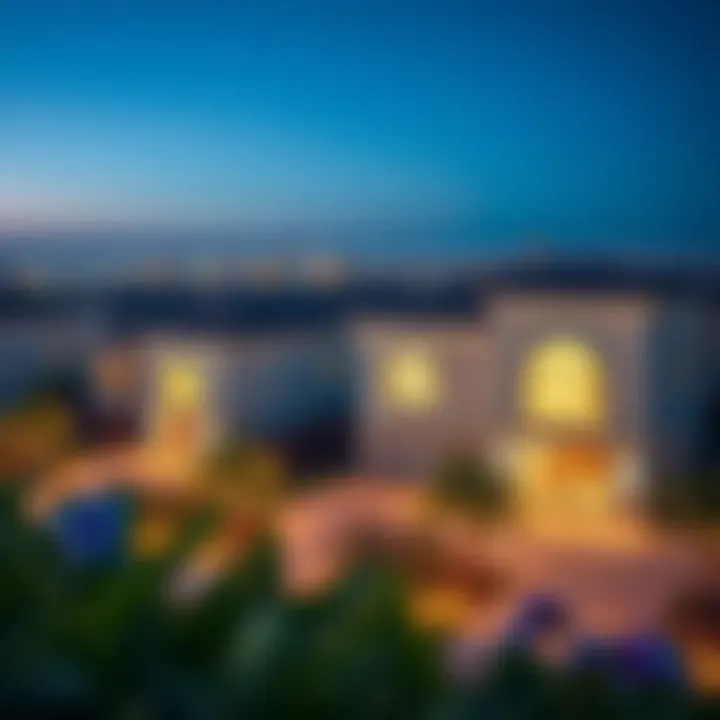
Understanding community features and lifestyle in Dubai's new developments is essential for potential residents and investors alike. Beyond brick and mortar, these aspects define the quality of life within neighborhoods. A vibrant community life can significantly boost demand for properties, creating an attractive investment environment.
One central element is the availability of residential options for families. As the demand for family-friendly living spaces grows, so does the need for neighborhoods that cater to various family structures. Many new districts offer a range of residential options, from spacious villas with gardens to modern apartments equipped with amenities that foster safe and enjoyable living.
Residential Options for Families
Choosing the right home in Dubai is paramount for families seeking stability and growth. Many neighborhoods like Dubai Hills Estate and Arabian Ranches III are designed with families in mind. These areas provide ample space for children to play and grow, alongside well-planned amenities.
- Diverse Housing Types: From three-bedroom townhouses to expansive five-bedroom villas, families can find homes that fit their needs and budgets.
- Community Amenities: Most new developments include parks, playgrounds, and community centers, promoting a healthy and active lifestyle.
- Safety: Many neighborhoods have 24-hour security, which is a comforting factor for families when selecting their new home.
In addition, community organizations in these developments often organize family-oriented events, fostering a sense of belonging. These elements contribute to a supportive and nurturing environment for all age groups, making Dubai not just a place to live, but a place to thrive.
Social and Cultural Activities
In addition to residential comforts, the social and cultural activities available in these emerging neighborhoods are crucial for enhancing the overall lifestyle experience. Whether it's art shows, cultural festivals, or food fairs, communities should be vibrant and engaging.
Many districts in Dubai are strategically designed to encourage social interactions:
- Cultural Events: New neighborhoods often host cultural events celebrating diversity, allowing residents to engage and connect with others from various backgrounds.
- Local Markets and Food Festivals: These are perfect venues for families to explore local cuisine and crafts, building a sense of community.
- Sabha and Coffee Houses: These traditional spaces allow for casual meetings and a way to foster friendships amongst neighbors.
- Fitness and Wellness Programs: With many outdoor spaces available, there are opportunities for yoga classes, fitness boot camps, and more, promoting a healthy, interconnected lifestyle.
Overall, community features and lifestyle offerings in Dubai’s emerging neighborhoods are critical in shaping the experiences of residents. Potential investors, homebuyers, and expatriates can find significant value in these developments, not only for housing but also for the rich lifestyle they offer.
"A strong community often leads to a strong market. When people enjoy living in a place, they tend to stay, which drives property values up."
Real Estate Regulations and Guidance
Understanding the regulations surrounding real estate in Dubai is vitally important for anyone looking to make a mark in this vibrant market. The legal landscape can often seem daunting, particularly for foreign investors hoping to navigate this flourishing city. However, with the right knowledge and guidance, the intricate web of laws can be unraveled, making the path to property acquisition clearer and more accessible.
Understanding Laws for Foreign Investors
Dubai has attracted a wealth of interest from international buyers, and its legal framework provides a range of opportunities for foreign investors. One of the standout features is the freehold property option, which allows foreign nationals to own property outright in designated areas. This essentially means that your investment can be yours without retaining any local partner or entity, giving you full control.
Moreover, the UAE government has introduced various initiatives to bolster investor confidence. The Golden Visa, for instance, facilitates long-term residency for investors, thus enhancing Dubai's appeal as a global real estate hub. However, it is crucial to be aware of the underlying requirements for eligibility. Generally, these may include demonstrating the financial capability to invest in property valued higher than a specific threshold.
A few important points to keep in mind:
- The property must be in a designated freehold area.
- Investors are subject to a transfer fee, which is typically around 4% of the property value.
- Registration with the Dubai Land Department is mandatory to ensure legal ownership.
Navigating Property Acquisition Processes
Acquiring a property in Dubai can feel like a complex puzzle, but breaking it down into steps can simplify the process. Here’s how you can tackle the property acquisition journey.
- Research and Identify: Before you make any commitments, thorough research on prospective neighborhoods is key. Each area has its own unique selling points, influenced by factors like accessibility, amenities, and lifestyle.
- Engage a Real Estate Agent: Partnering with a seasoned real estate agent familiar with Dubai’s market is often advantageous. They can assist in identifying properties that align with your needs and guiding overall negotiations.
- Making an Offer: Once a suitable property is found, you may need to submit an offer. Be prepared for potential counteroffers, as negotiation plays a significant role in the acquisition process.
- Due Diligence: Conducting due diligence is non-negotiable. This may include verifying property documents, ensuring all fees and charges are clear, and confirming the developer’s reputation and financial standing.
- Contract Signing: After settling on terms, you will draft a sale agreement. This usually involves a deposit, typically 10% of the purchase price. Ensure all contractual terms reflect what has been discussed.
- Finalizing the Transfer: The last step is the official transfer of property title at the Dubai Land Department. Not only will this require a final payment, but also verification of all necessary documentation.
"Navigating property acquisition is about precision and understanding the local laws. Each step taken needs to be deliberate, ensuring that your investment stands on solid ground."
By understanding the laws that govern real estate and following structured processes, navigating Dubai's real estate landscape becomes less of a burden and more of an opportunity. With the right guidance, potential investors can turn these systems to their advantage, paving the way for successful investments that cater not only to personal ambitions but also to the vibrant dynamics of Dubai's ever-evolving market.
Closure: The Future of Dubai's New Destinations
Dubai is renowned for its rapid transformation and ambitious projects, continually reshaping itself to welcome new communities and innovations. As we look towards the future, the significance of new destinations in this diverse city cannot be overstated. These emerging areas are not just bricks and mortar; they represent opportunities—both for investors and residents alike. As the landscape evolves, understanding the implications of these changes is crucial for making informed decisions.
One of the paramount aspects to consider is Long-Term Investment Viability. Fresh neighborhoods often come with a certain buzz, attracting attention that can lead to higher property values over time. Investors should analyze not just the immediate returns but the sustainability of those investments as the areas develop. In Dubai, growth can sometimes feel like a rollercoaster. The wise investor assesses the local infrastructure, amenities, and demographic trends that influence desirability. If a region is backed by solid transport links, schools, and commercial centers, it stands a better chance of weathering market shifts in the long run.
Potential hotspots like Dubai Creek Harbour aim to balance residential living with cultural and recreational elements. Investors should remain keenly aware of such developments that can enhance the livability of neighborhoods. Moreover, the government’s commitment to urban planning and outstanding hospitality ensures that these new locales not only attract tourists but also cultivate thriving communities.
Long-Term Investment Viability
Success in real estate investment hinges on various factors, including economic stability and future growth foresight. To truly grasp long-term viability, one must look at:
- Market data and trends: Keeping an eye on price trends, rental yields, and occupancy rates provides essential clues about a property’s future.
- Government initiatives: Tender programs promoting renovations or maintenance within emerging neighborhoods can significantly elevate their standing.
- Community vibes: Areas that embrace culture and lifestyle elements often retain their charm and demand.
By understanding these aspects, investors can confidently position themselves in a landscape full of potential.
Preparing for Upcoming Developments
As the proverbial clock ticks, staying ahead in Dubai's ever-evolving real estate market requires foresight. Preparing for the upcoming developments is undoubtedly crucial. This encompasses:
- Researching developers: Knowledge about credible developers can provide insights into project quality and timelines.
- Monitoring government plans: Tracking policy changes and future infrastructural projects can unveil new opportunities.
- Networking with local experts: Engaging with real estate agents, market analysts, and other investors can yield valuable knowledge and minimize risks.



